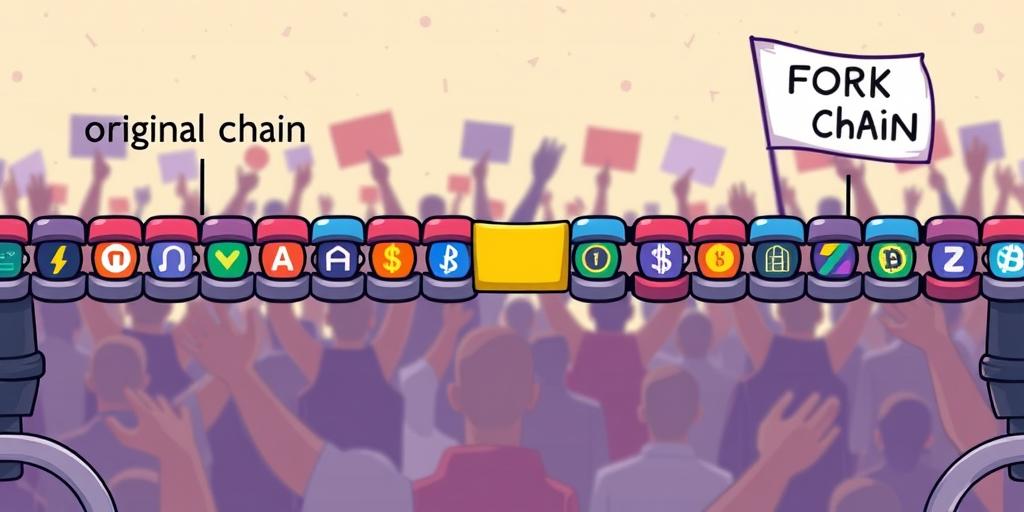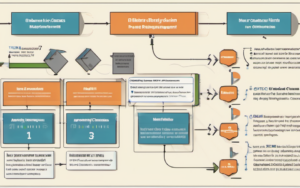In the world of cryptocurrencies and blockchain technology, the term “Blockchain Fork” often arises, particularly during significant developments and advancements. This term refers to a crucial process that allows the blockchain network to evolve and adapt, addressing challenges, incorporating new features, and even leading to the creation of entirely new cryptocurrencies. Understanding blockchain forks is essential for anyone interested in navigating the dynamic landscape of cryptocurrencies.
What Is a Blockchain Fork?
To fully grasp the concept of a blockchain fork, we first need to understand the fundamentals of blockchain technology.
Understanding the Basics of Blockchain Technology
Imagine a digital ledger shared across a vast network of computers, recording every transaction in a secure and transparent manner. This is the essence of a blockchain. Each block in the chain contains a set of transactions, linked together cryptographically, creating a secure and tamper-proof record.
The Concept of a Fork
Now, imagine a situation where there’s a disagreement among the nodes in the network about the next block to be added to the chain. This disagreement can arise from various factors, such as disagreements about protocol updates or even conflicting interpretations of the existing rules. When this happens, the blockchain splits into two separate chains, each with its own history of transactions. This split is known as a blockchain fork.
Types of Forks: Hard Forks vs. Soft Forks
There are two main types of forks: hard forks and soft forks.
- Hard forks involve a significant change to the blockchain’s rules, making the new chain incompatible with the old chain. This means that nodes running the old software cannot validate transactions on the new chain, and vice versa. A hard fork often leads to the creation of a new cryptocurrency.
- Soft forks, on the other hand, involve backward-compatible changes to the rules. This means that nodes running the old software can still validate transactions on the new chain, but not vice versa. Soft forks are generally used to introduce minor improvements or bug fixes without disrupting the existing network.
The Process of a Blockchain Fork
A blockchain fork is not an impulsive action. It’s a carefully planned and executed process involving several steps:
Initiation and Proposal
The process typically starts with a proposal for a change to the blockchain’s rules. This proposal is often put forward by developers, miners, or a community of users. The proposal outlines the specific changes being proposed, the reasons behind them, and the potential impact on the network.
Implementation and Activation
Once a proposal gains enough support from the community, it is implemented and integrated into the blockchain’s code. This implementation process can take time, involving testing and debugging to ensure the changes are stable and secure. When the changes are deemed ready, they are activated, marking the point where the blockchain splits into two chains.
Impact on the Blockchain Network
The activation of a blockchain fork can have a significant impact on the network. It can lead to increased transaction fees, slower transaction speeds, or even temporary network instability. However, it can also bring about positive changes, such as improved security, enhanced functionality, or the introduction of new features.
Impacts of a Blockchain Fork
Blockchain forks can have a profound impact on the cryptocurrency ecosystem, leading to several outcomes:
New Features and Upgrades
One of the primary reasons for blockchain forks is to introduce new features and upgrades to the network. This can involve anything from improving scalability and security to adding new functionalities. For example, the Bitcoin Cash (BCH) fork was initiated to increase block sizes, allowing for faster transaction processing.
Coin Splits and Token Distribution
Blockchain forks can also lead to coin splits, where users holding the original cryptocurrency receive an equivalent amount of the new cryptocurrency. This often happens during hard forks, as the new chain inherits the history of the original chain. For instance, the Ethereum Classic (ETC) fork resulted in a coin split, giving Ethereum (ETH) holders a corresponding amount of ETC.
Potential for Network Division
While blockchain forks can be beneficial, they also carry the risk of network division. If a significant portion of the community does not support the proposed changes, they may continue using the old chain, leading to two separate networks. This can result in a decrease in overall network security and a decrease in the value of the original cryptocurrency.
Notable Blockchain Forks
Here are some notable examples of blockchain forks that have significantly impacted the cryptocurrency landscape:
Bitcoin Cash (BCH)
In 2017, the Bitcoin blockchain experienced a hard fork that resulted in the creation of Bitcoin Cash (BCH). The primary motivation behind the fork was to increase the block size, allowing for more transactions to be processed. This resulted in two separate blockchains: the original Bitcoin blockchain and the new Bitcoin Cash blockchain.
Ethereum Classic (ETC)
In 2016, the Ethereum blockchain experienced a hard fork that resulted in the creation of Ethereum Classic (ETC). This fork was a response to a contentious hacking incident on the Ethereum network. The fork led to two separate blockchains: the original Ethereum blockchain and the new Ethereum Classic blockchain.
Conclusion: The Significance of Blockchain Forks in the Crypto Ecosystem
Blockchain forks are an integral part of the evolution of cryptocurrency and blockchain technology. They enable the network to adapt to changing needs, address vulnerabilities, and introduce new functionalities. While they can lead to network division and other challenges, they also offer opportunities for innovation and growth. Understanding the process and potential impacts of blockchain forks is essential for anyone navigating the dynamic world of cryptocurrencies. As the blockchain ecosystem continues to develop and evolve, we can expect to see more blockchain forks in the future, shaping the future of this transformative technology.




